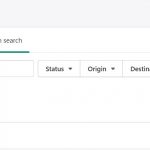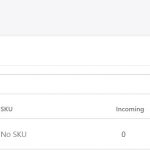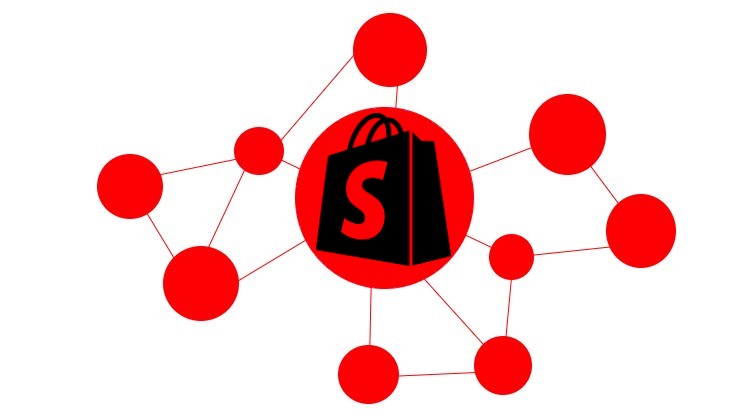
What is Shopify? Most people know that it is an e-commerce platform. However, many more nuances are hidden behind this title. People all over the globe use Shopify to create online websites. However, their default functionality is not always enough to satisfy specific business demands. If it happens so, merchants start exploring Shopify integrations. That’s what we also do below. After a brief introduction to the platform’s essentials, we proceed to the Shopify integrations. You will learn what types of Shopify integrations are available and how to connect your e-commerce website to different external systems. Below, we discuss native, third-party, iPaaS, and custom Shopify integrations. You will learn what the difference between them is and what their advantages are. Also, we highlight the most popular Shopify integrations with Quickbooks, Amazon, Hubspot, WordPress, and Salesforce.
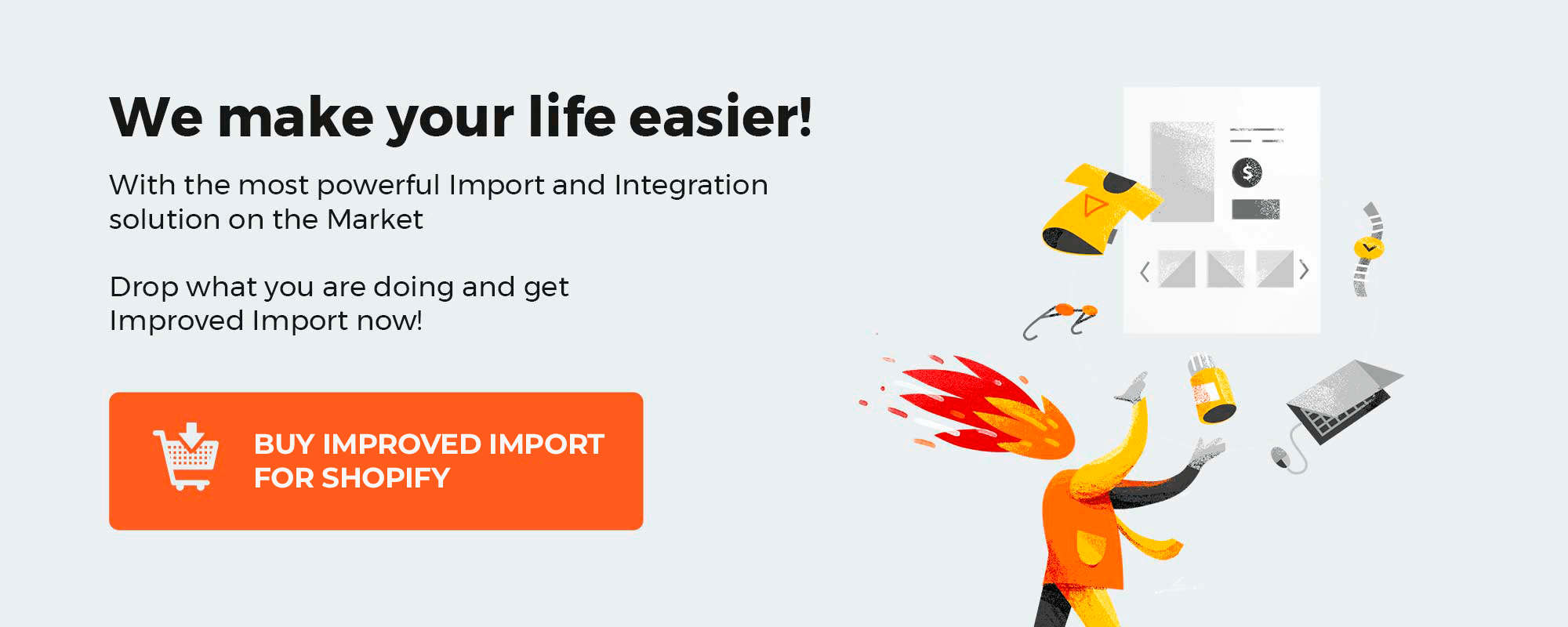
Table of contents
What is Shopify?

Shopify is a platform that allows businesses to construct an online store for selling their items. It is a cloud-based, fully hosted system that provides various tools and services to assist companies in creating and managing online stores. You can check our Shopify admin review to learn more about its functionality.
The system lets you easily create a website, add products, accept payments, and manage shipping and orders. It is user-friendly, so even individuals with no technical knowledge may construct a professional-looking web store. Shopify also provides a variety of customization choices, allowing businesses to construct a store that reflects their brand and style. In addition to e-commerce, Shopify provides tools for marketing, customer engagement, and other business activities.
Here are 10 key features of Shopify:
- Website builder: With configurable themes and a drag-and-drop editor, Shopify allows you to construct a professional-looking website.
- Product management: Products with descriptions, photos, and pricing can be quickly added and organized in your online store.
- Payment processing: Shopify works with a variety of payment gateways, letting you accept credit cards and other kinds of payment securely.
- Shipping and fulfillment: Shopify provides capabilities for order management, including the ability to create shipping labels and track shipments.
- Marketing and SEO: Shopify offers tools to help you create marketing campaigns, analyze traffic, and optimize your store for search engines.
- Mobile optimization: Shopify’s online stores are mobile-friendly, allowing customers to shop while on the go.
- Customer management: You get the ability to maintain client information, including their order history and preferences, and launch targeted email campaigns.
- Apps and integrations: Shopify offers a large choice of apps and connectors that allow you to extend the functionality of your e-commerce website.
- Analytics and reporting: Shopify delivers thorough statistics and data to help you track the performance of your store and make educated decisions.
- Security: Shopify is PCI certified and uses secure servers to safeguard client information.
And these are the top five Shopify advantages over other e-commerce platforms:
- Ease of use: Shopify is well-known for its user-friendly interface and intuitive design, which allows even non-technical users to easily set up and manage their online store.
- Wide range of features: Shopify provides a variety of tools and services to assist businesses in creating and managing their online shops, such as a website builder, payment processing, shipping and fulfillment capabilities, marketing and SEO tools, etc.
- Customization options: With a drag-and-drop editor, adjustable themes, and the option to add custom code, Shopify enables businesses to tailor their online store to reflect their brand and style.
- Large app store: Over 4,000 apps and integrations are available in Shopify’s expansive app store, allowing companies to expand the functionality of their e-commerce websites.
- Strong support and resources: Shopify has numerous support options, such as a knowledge base, forums, and round-the-clock phone, email, or chat help. They also provide a variety of materials to assist businesses to flourish with their online stores, such as blogs, tutorials, and webinars.
Shopify Integrations
Shopify features a robust app store with over 4,000 apps and integrations. These apps and integrations enable businesses to add marketing tools, accounting software, customer care platforms, and other features to their online store.
Although many of the apps and integrations accessible in the Shopify app store are created by third-party developers, Shopify also provides a number of its own applications and integrations.
Native Shopify integrations are intended to be simple to use and set up, with straightforward installation and configuration procedures. Many integrations are also designed to be fully integrated with the Shopify platform, allowing for seamless integration and operation.
By default, Shopify works with a multitude of payment gateways, including PayPal, Stripe, and Square, allowing businesses to accept a wide range of payment methods securely. Shopify also interfaces with key shipping carriers like USPS, UPS, and DHL, making it simple for businesses to print shipping labels and track shipments.
You may integrate Shopify with existing tools and platforms to increase productivity, sell your products more efficiently, create better customer collaboration, etc. There is no need to leave the ecosystem because the platform’s marketplace contains a large number of native and third-party Magento 2 connectors. At the same time, iPaaS and bespoke connectors are available if the marketplace extensions don’t cover your needs. Let’s explore ways to manage Shopify integrations.
Native Shopify integrations
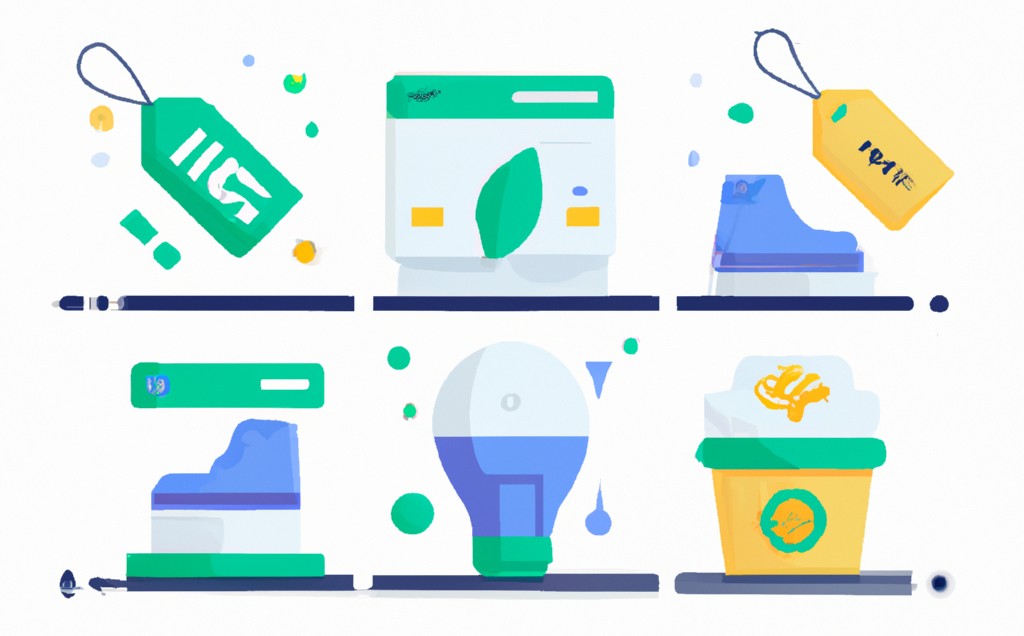
Generated with DALL·E
Native Shopify integrations are those that Shopify has created for the purpose of its users These integrations are intended to be fully connected with the Shopify platform, enabling smooth data synchronization and operation. Here are some examples of native Shopify integrations:
- Shopify Payments: Shopify’s payment gateways allow businesses to take credit card payments directly through their web store. Multiple external systems are involved
- Shopify Shipping: Shopify provides external shipping and fulfillment solutions that are built into the platform and allow businesses to print shipping labels and track shipments.
- Shopify POS: A point-of-sale system offered by Shopify allows businesses to process in-person transactions using a smartphone or tablet.
- Shopify Email: This is Shopify’s email marketing platform that allows businesses to create and send targeted email campaigns to their customers.
- Shopify Capital: This is a financing service offered by Shopify, which provides businesses with access to capital to help them grow.
Native Shopify integrations are typically included with a Shopify subscription, and they are designed to be easy to use and set up. They can provide businesses with access to a wide range of tools and features that are fully integrated with the Shopify platform, allowing them to streamline their operations and focus on growing their business.
Third-party Shopify integrations
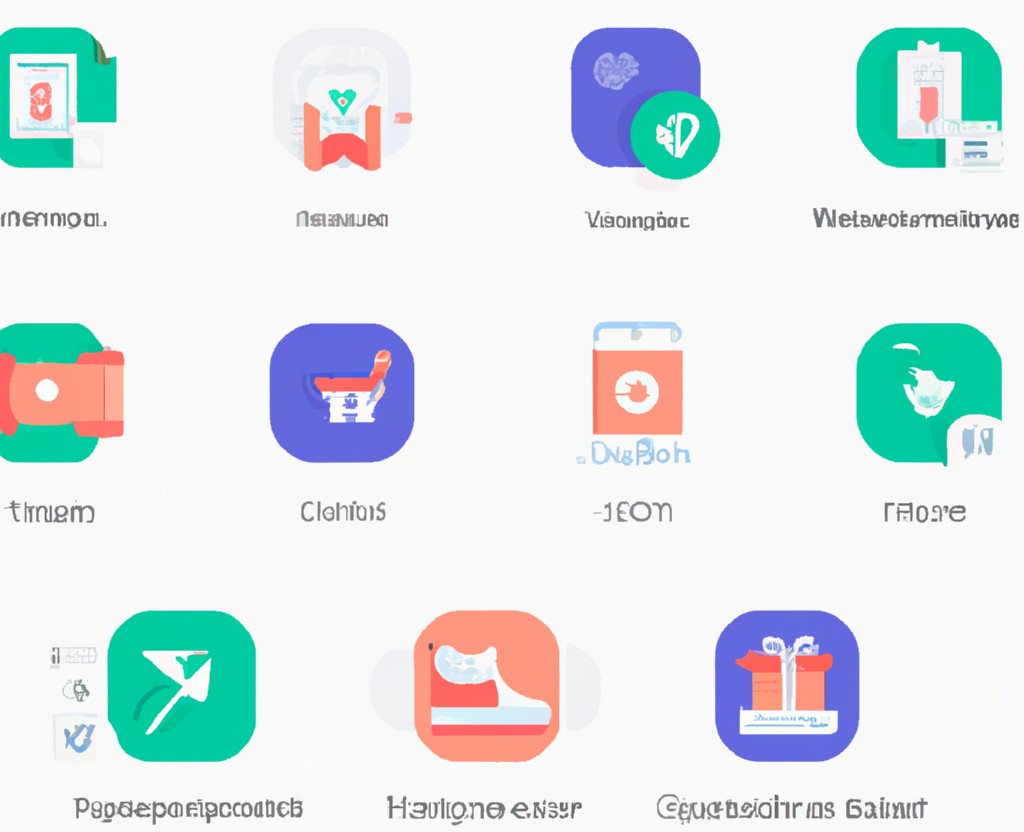
Generated with DALL·E
Third-party Shopify integrations are those created and sold by parties other than Shopify. These integrations are designed to enhance the functionality of the platform and can be added to a Shopify store via the Shopify app store. Third-party Shopify integrations include the following:
- Marketing and advertising tools: There are many third-party apps available on the Shopify App Store that allow businesses to create and manage marketing campaigns, analyze traffic, and optimize their store for search engines. For instance, Automizely SMS Marketing or Mailchimp: Email Marketing.
- Customer service and support tools: There are also many apps available that provide businesses with customer service and support functionality, such as live chat, email support, and customer feedback tools. For instance, WhatsApp Chat or Tidio.
- Accounting and financial tools: Shopify App Store offers numerous tools that allow businesses to manage their finances and accounting, including invoicing, expense tracking, and inventory management. For instance, Xero Bridge or QuickBooks Enterprise Sync.
- Social media and email marketing tools: A number of third-party apps available on the Shopify App Store allow businesses to connect their Shopify store to their social media accounts and send targeted email campaigns to their customers. For instance, Facebook & Instagram or Pinterest.
Many third-party Shopify integrations are designed to be easy to use and set up, and they can provide businesses with access to a wide range of additional functionality.
iPaaS Shopify integrations
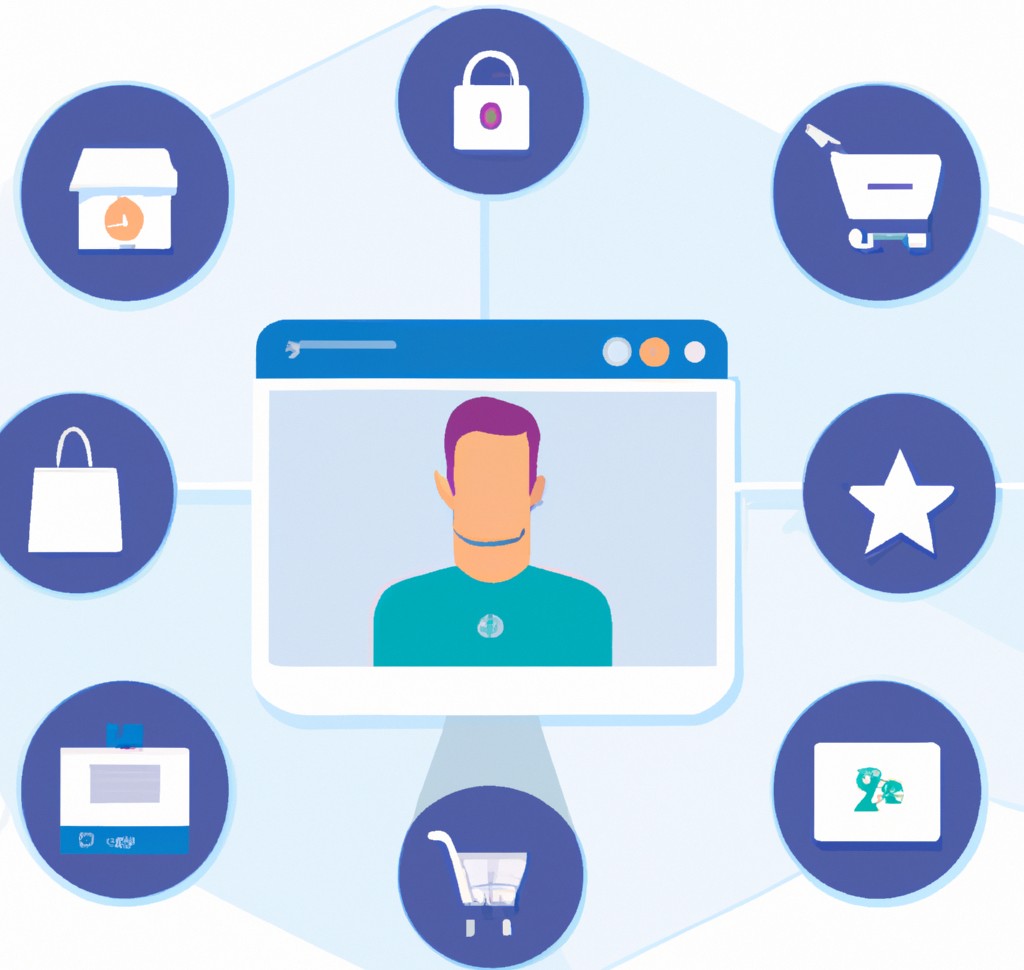
Generated with DALL·E
Shopify iPaaS (Integration Platform as a Service) integrations allow businesses to connect their Shopify store to other software applications and platforms but in an absolutely different manner than native and third-party tools. These integrations can be used to automate various business processes and streamline operations.
Some examples of Shopify iPaaS integrations include:
- Inventory management: Although Shopify offers built-in inventory management capabilities, you may use iPaaS integrations to connect it to third-party inventory management software. Integration with inventory management systems, such as Zoho inventory, allows businesses to automatically update their product inventory levels in Shopify based on real-time data from the integrated systems.
- Order management: Order management capabilities are also available in Shopify by default. However, you may rely on iPaaS systems to replace the default functionality with more robust third-party options. Integration with order management systems like NetSuite allows merchants to automatically update order status, tracking information, and other details, combining data from Shopify and other channels.
- Accounting software: iPaaS integrations with accounting software, such as QuickBooks, allow businesses to sync financial data between Shopify and their accounting system automatically.
- CRM systems: Integration with CRM systems like Salesforce allows businesses to automatically sync customer data between Shopify and the connected platform, allowing them to manage customer relationships more effectively.
Shopify iPaaS integrations provide companies with a way to automate and streamline various business processes, improving efficiency and reducing the need for manual data entry. There are several advantages to using Shopify iPaaS integrations:
- Automation: The ability to automate numerous business operations, such as adjusting product inventory levels or syncing customer data, is one of the primary benefits of Shopify iPaaS connections. This can save time by eliminating the need for manual data entry.
- Streamlined operations: Businesses can streamline their processes and boost efficiency by linking various software apps and platforms. Integration with an inventory management system, for example, can assist organizations to avoid overstocking or running out of products.
- Improved data accuracy: By automatic data syncing between different systems, Shopify iPaaS integrations can help enhance data accuracy. This can assist firms in avoiding errors and inconsistencies, hence boosting overall efficiency and decision-making.
- Increased productivity: Businesses can free up time and resources by automating processes and streamlining operations, allowing employees to focus on higher-value jobs and increasing productivity.
- Cost savings: By decreasing the need for manual data entry and other manual operations, Shopify iPaaS connections can also help organizations save money.
Overall, Shopify iPaaS integrations can provide businesses with a range of benefits, including increased efficiency, improved data accuracy, and cost savings. Below, you can see a few examples of Shopify iPaaS integrations:
- Zapier: This is a popular iPaaS platform that allows businesses to connect their Shopify store to over 2,000 different apps and platforms, including Google Sheets, Mailchimp, and Salesforce.
- Workato: With the help of this platform, you can connect your Shopify store to a wide range of apps and tools, including QuickBooks, Xero, and Slack.
- Integromat: This iPaaS platform allows businesses to create automated workflows to connect their Shopify store to other apps and platforms, such as Google Calendar and Trello.
- Skyvia: With this iPaaS platform, it is possible to connect Shopify stores to a variety of cloud-based apps and platforms, including Salesforce and Microsoft Dynamics.
- Jitterbit: This iPaaS platform enables businesses to integrate their Shopify store with a wide range of tools like NetSuite, Zendesk, and ServiceNow.
These are just a few examples of the many iPaaS platforms available that allow businesses to connect their Shopify store to other apps and platforms. Usually, they let merchants establish connections that incorporate the following actions and entities:
| Entity | Description | Supported actions |
| Customer | A customer is someone who purchases goods and services on your Shopify storefront. |
|
| Order | An order is a collection of goods or services that a consumer adds to their shopping cart and pays for on your Shopify checkout page. |
|
| Product | A product is a physical or digital item or service sold on your Shopify website. |
|
Custom Shopify integrations
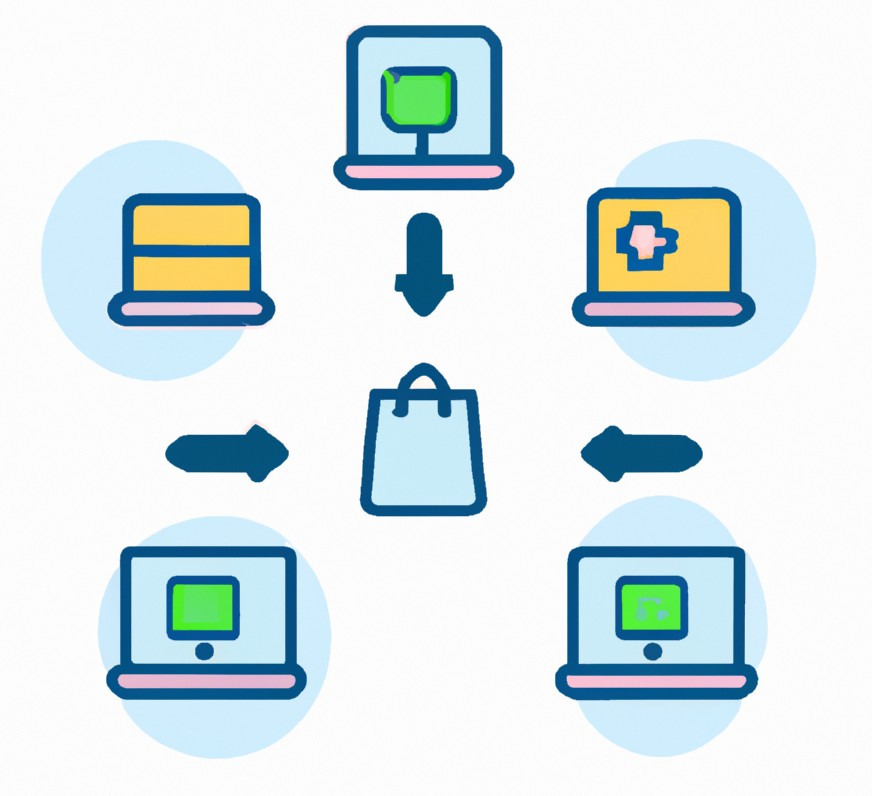
Generated with DALL·E
Custom Shopify integrations are integrations that are developed specifically for a business’s unique needs and requirements. These integrations can be created by Shopify or by third-party developers, and they are designed to connect a business’s Shopify store to other software applications or platforms in a way that is tailored to the business’s specific needs.
Some examples of custom Shopify integrations include:
- Connecting a Shopify store to a custom-built inventory management system.
- Integrating a Shopify store with a proprietary CRM system.
- Connecting a Shopify store to a custom-built order management system.
- Integrating a Shopify store with a custom-built accounting system.
- Connecting a Shopify store to a proprietary loyalty program.
Custom Shopify integrations can provide businesses with a way to connect their Shopify store to other systems and platforms in a way that is tailored to their specific needs and requirements. These integrations can be developed using APIs (Application Programming Interfaces) or other integration technologies, and they can provide businesses with a range of benefits, including automation, streamlined operations, and improved data accuracy. Contact us to find out more about the Shopify integration possibilities our team provides.
Most popular Shopify integrations
Below, we explore the most popular Shopify integrations:
- Shopify Integration With Quickbooks;
- Shopify Amazon Integration;
- Shopify Hubspot Integration;
- Shopify Integration With WordPress;
- Shopify Salesforce Integration.
Shopify Integration With Quickbooks
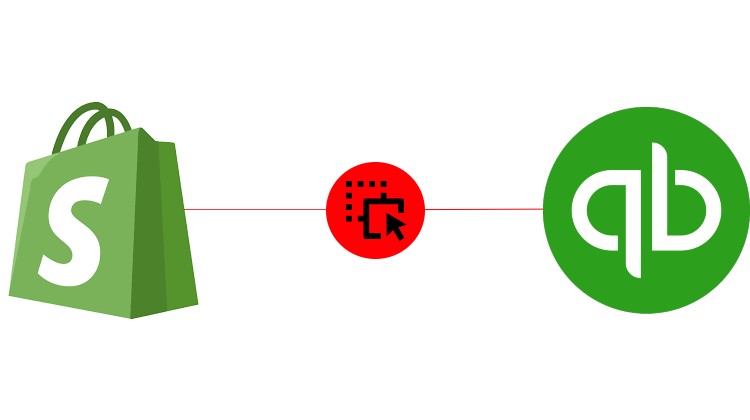
QuickBooks is a financial software program intended to assist small and medium-sized enterprises in managing financial data such as invoicing, billing, costs, and payroll. QuickBooks is accessible in both online and desktop versions, and it includes a variety of features and tools to assist businesses with financial management, such as:
- Invoicing and billing: Shopify integration with Quickbooks allows businesses to create and send invoices and bills to their customers, and it also provides tools for tracking and managing unpaid invoices.
- Expense tracking: Shopify integration with Quickbooks allows businesses to track and categorize their expenses, including employee expenses, travel expenses, and business-related expenses.
- Payroll: Shopify integration with Quickbooks offers a range of payroll tools, including payroll tax calculations, employee time tracking, and employee payroll tax forms.
- Financial reporting: Shopify integration with Quickbooks provides a range of financial reports, including profit and loss statements, balance sheets, and cash flow statements, to help businesses track their financial performance.
- Inventory management: Shopify integration with Quickbooks provides tools for tracking and managing inventory levels, including the ability to set reorder points and generate purchase orders.
Overall, QuickBooks is a popular financial software application that is designed to help small and medium-sized businesses manage their financial data and make informed business decisions. And Shopify integration with Quickbooks dramatically extends the default financial opportunities associated with the e-commerce platform in the following manner:
- The Shopify integration with QuickBooks allows businesses to sync their financial data between Shopify and QuickBooks, including sales data, product information, and customer data.
- The Shopify Quickbooks integration is designed to be easy to set up and use, with a simple configuration process that can be completed in just a few steps.
- The integration allows businesses to choose which data they want to sync between Shopify and QuickBooks, and they can set up automatic sync schedules to ensure that their data is always up to date.
- The Shopify integration with QuickBooks supports multiple currencies, allowing businesses to sell products in different currencies and have the data automatically converted to the currency of their choice.
- The integration is compatible with QuickBooks Online and QuickBooks Desktop, allowing businesses to choose the version that best fits their needs.
The Shopify Quickbooks integration allows you to add the following elements to your automated workflow:
- Bill – A bill is an invoice that your vendors send to you to collect money from you.
- Invoice – An invoice is a document that is used to record sales transactions from consumers.
- Transaction – A transaction type describes the sort of transaction that occurred, such as a client transaction, a bill payment, or a bank transfer.
- Item – An item is a product or service a firm buys and sells.
- Payment – A payment object is used in QuickBooks to record a payment. It can be applied to many Invoices and Credit Memos for a single customer.
- Customer – A customer is someone who pays for your products and services.
- Vendor – A vendor is a person or company who sells you things or provides you with services.
- Employee – An employee is a person who works for the company.
- Estimate – An estimate is a quote for goods or services given to a customer. If the customer approves the quote, it can be converted into a sales order or invoice.
- Purchase – A purchase object reflects an expense you incur, such as a vendor purchase. A buy order informs vendors of your intention to purchase.
Your Shopify Quickbooks integration may look as follows. Assume you need to update the customer’s details in Quickbooks every time the corresponding customer data is changed in Shopify. Create the following workflow in your iPaaS system:
- A cron node initiates a search process that looks for Shopify customers.
- The search node provides newly discovered information to another node that analyzes it and filters out customers that have been updated according to the Quickbooks records.
- The next node receives the information necessary for updating customer information on the Quickbooks side.
Do you want to know more examples of the iPaas-based Shopify integration with Quickbooks? Drop us a message.
Shopify Amazon Integration
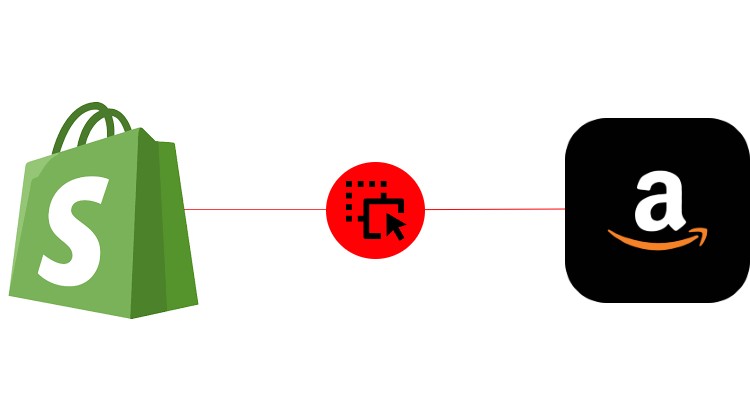
Amazon Marketplace is a website run by Amazon that allows third-party retailers to sell their products on the platform. Amazon Marketplace enables businesses and individuals to set up an online store, connecting to millions of Amazon customers. Customers can explore and buy products in a variety of categories, including electronics, home and kitchen, fashion, health, etc.
Amazon Marketplace provides a variety of tools and capabilities to assist sellers in managing their online business. The Shopify Amazon integration goes even further. It allows businesses using Shopify to sell their products on the Amazon Marketplace platform. The integration allows companies to seamlessly list their products on Amazon and manage their orders and inventory from within the Shopify platform. Some features of the Shopify Amazon integration include:
- Product listing: With the Shopify Amazon integration, businesses can easily list their products on Amazon from within the Shopify platform, including product descriptions, images, and pricing.
- Order management: The integration allows companies to manage their Amazon orders from within the Shopify platform. The Shopify Amazon integration even empowers them to track orders and process returns.
- Inventory management: Businesses can leverage the Shopify Amazon integration to sync their inventory levels between Shopify and Amazon, ensuring that their products are always in stock and available for sale.
- Fulfillment: The Shopify Amazon integration allows businesses to choose between fulfilling orders themselves or using Amazon’s fulfillment service to handle shipping and delivery.
Overall, the Shopify Amazon integration provides merchants with a way to easily sell their products on the Amazon Marketplace platform, streamlining their operations and improving efficiency.
Your Shopify Amazon integration may look as follows. Assume you need to update the customer’s details in Shopify every time the corresponding customer data is changed on the Amazon side. Your workflow for this case consists of just a few elements:
- A cron node initiates a search process that looks for Amazon customers.
- The search node provides newly discovered information to another node that analyzes it and filters out customers new to Shopify.
- The next node receives the information necessary for updating customer information on the Shopify side.
Do you want to know more examples of the iPaas-based Shopify Amazon integration? Drop us a message.
Shopify Hubspot Integration

HubSpot is a CRM platform that helps businesses manage and grow their customer relationships, providing a range of tools and features to help businesses attract, engage, and delight customers. Its core instruments cover the needs of the following business areas:
- Marketing: HubSpot provides a range of marketing tools, including email marketing, social media marketing, and SEO.
- Sales: HubSpot offers sales tools, such as lead management, lead tracking, and sales forecasting, to help businesses close more deals.
- Customer service: HubSpot delivers customer service tools, such as live chat, ticketing, and knowledge management, to help businesses support their customers.
- Analytics: HubSpot supplies a range of analytics tools to help businesses track and analyze their performance, including website analytics, social media analytics, and sales analytics.
HubSpot is a comprehensive CRM platform that helps businesses manage and grow their customer relationships through a range of marketing, sales, customer service, and analytics tools. As for the HubSpot Shopify integration, it dramatically extends the default functionality of your e-commerce website. The integration allows businesses using HubSpot to connect their Shopify store with their HubSpot account, syncing data between the two platforms, including customer data, order data, and product data.
Some features of the HubSpot Shopify integration include:
- Customer data syncing: The HubSpot Shopify integration allows businesses to sync customer data between HubSpot and Shopify, including customer names, email addresses, and purchase history.
- Order data syncing: The HubSpot Shopify integration allows businesses to sync order data between HubSpot and Shopify, including order details, tracking information, and customer data.
- Product data syncing: The HubSpot Shopify integration allows businesses to sync product data between HubSpot and Shopify, including product names, descriptions, and pricing.
- Marketing automation: The HubSpot Shopify integration allows businesses to use HubSpot’s marketing automation tools to create targeted campaigns and send personalized email messages to their Shopify customers.
The HubSpot Shopify integration provides businesses with a way to connect their Shopify store with their HubSpot account and sync data between the two platforms, improving efficiency and allowing for more targeted marketing efforts. If you choose the iPaaS approach, the following entities are at your disposal:
- Company – The company object in HubSpot is a source of information about the companies and organizations you work with.
- Contact – A contact is anyone who engages with your business by filling out a form, using your chat service, or doing anything online or offline.
- Form – A form is a tool used to collect data about your website visitors.
- Ticket – A ticket is a request from a client that your support team gets.
- Contact List – A contact list is a list of contacts and companies in your HubSpot.
- Deal – A deal is an ongoing transaction with a person or business that might be completed successfully or failed.
- Engagement – An engagement can be a task, email, phone call, meeting, or note.
Let’s take a look at a tiny example. Suppose you want to create a new engagement in Hubspot every time a new contact is added to Shopify. Use this workflow:
- A cron node launches a search process to find new contacts in Shopify.
- A filter node analyzes whether the discovered contacts are unique to Hubspot.
- The filter node passes newly discovered information to a generation node that creates an engagement in Hubspot.
Do you want to know more examples of the iPaas-based Shopify Hubspot integration? Drop us a message.
Shopify Integration With WordPress
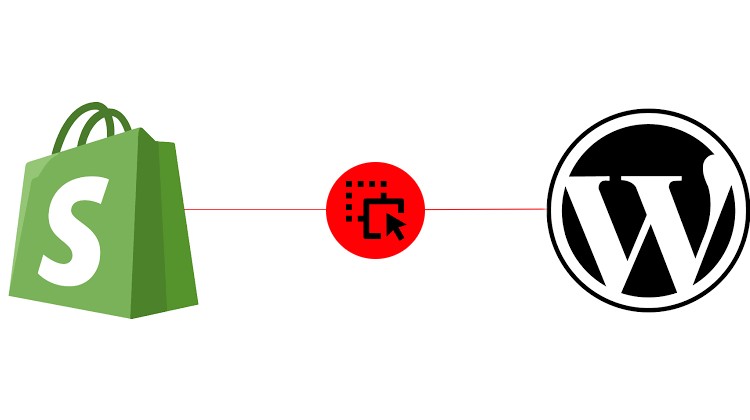
WordPress is a content management system known for its user-friendliness and flexibility. It is used by millions of websites worldwide, allowing users to easily create and manage websites. It is an open-source platform, meaning that the source code is freely available and can be modified by users.
WordPress is used to create a wide range of websites, including blogs, e-commerce stores, business websites, and more. It is easy to use, even for users with no coding experience, and it offers a range of tools and features to help merchants create and customize their websites.
Some features of WordPress include:
- Themes: WordPress provides a range of pre-designed themes that users can choose from to customize the look and feel of their website.
- Plugins: WordPress offers a wide range of plugins that allow users to add additional functionality to their websites, such as contact forms, SEO tools, and social media integration. You can even turn your WP website into a fully-featured e-commerce store with the WooCommerce plugin.
- Blogging: WordPress is particularly well-known for its blogging capabilities, and it offers a range of tools to help users create and manage their blog posts.
- Media management: WordPress provides a range of tools for managing and organizing media, including images, videos, and audio files.
Overall, WordPress is a powerful and flexible CMS with millions of users worldwide. The WordPress Shopify integration allows businesses using WordPress to connect their WordPress website with their Shopify store. The integration provides the ability to display and sell Shopify products on WordPress sites. Also, it allows customers to purchase products directly from the website.
Some features of the Shopify WordPress integration include:
- Product display: The Shopify WordPress integration allows businesses to display their Shopify products on their WordPress website, including product images, descriptions, and pricing.
- Checkout: Customers can purchase products directly from the WordPress website, and the Shopify WordPress integration handles the checkout process, including payment processing and order fulfillment.
- Inventory management: The Shopify WordPress integration allows businesses to sync their Shopify inventory levels with their WordPress website, ensuring that products are always in stock and available for purchase.
- Order management: The Shopify WordPress integration allows businesses to manage their orders from within the Shopify platform, including tracking orders and processing returns.
You can use iPaaS systems to automate your Shopify WordPress integration. For example, every time a new order is placed on the WP side, you want to update the inventory on Shopify. Use the corresponding workflow for that:
- A cron node launches a search process to find new orders on the WordPress side.
- The search node passes the information to the process node that figures out what products and in what quantities were ordered.
- The process node passes this information to a generation node that creates an update for Shopify, deducting product quantities from the existing inventory.
Do you want to know more examples of the iPaas-based Shopify WordPress integration? Drop us a message.
Shopify Salesforce Integration
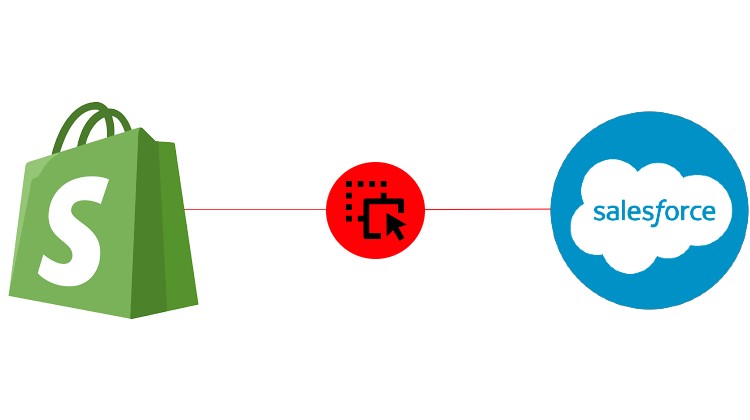
Salesforce is another CRM platform that helps businesses manage and grow their customer relationships in our list. It is a cloud-based system that helps businesses attract, engage, and retain customers. Its tools and features cover the following business processes:
- Sales: Salesforce provides a range of sales tools, such as lead management, lead tracking, and sales forecasting, to help businesses close more deals.
- Marketing: The platform offers marketing tools, such as email marketing, social media marketing, and lead generation, to help businesses attract and engage customers.
- Customer service: The system delivers customer service tools, such as live chat, ticketing, and knowledge management, to help businesses support their customers.
- Analytics: This CRM incorporates a range of analytics tools to help businesses track and analyze their performance, including website analytics, social media analytics, and sales analytics.
Being a comprehensive CRM platform, Salesforce helps businesses manage and grow their customer relationships through a range of sales, marketing, customer service, and analytics tools. The Shopify integration with Salesforce, in turn, allows companies using Shopify to connect their e-commerce stores with their Salesforce accounts to sync data between the two platforms, such as customer, order, and product data.
Some features of the Shopify integration with Salesforce include:
- Customer data syncing: The Shopify Salesforce integration allows businesses to sync customer data between Shopify and Salesforce, including customer names, email addresses, and purchase history.
- Order data syncing: The Shopify Salesforce integration allows businesses to sync order data between Shopify and Salesforce, including order details, tracking information, and customer data.
- Product data syncing: The Shopify Salesforce integration allows businesses to sync product data between Shopify and Salesforce, including product names, descriptions, and pricing.
- Marketing automation: The Shopify Salesforce integration allows businesses to use Salesforce’s marketing automation tools to create targeted campaigns and send personalized email messages to their Shopify customers.
As you can see, automation is a notable benefit of the Shopify Salesforce integration. You can utilize it to perform a variety of common operations without the need for manual interaction. The following entities are at your service:
- Lead – A lead is a potential customer who is interested in your products and services.
- Contact – A contact is a lead that has been identified as a possible customer.
- Customer – A customer is a person that does business with you.
- Opportunity – An opportunity is a current deal that states whose accounts it is for, who the player is, and how much potential revenue there is.
- Case – A case is an inquiry your support agent got from a client.
- Attachment – An attachment is a document attached to a record.
- Document – A document is a user-uploaded file.
You can streamline these entities to automate your Shopify Salesforce integration. Suppose you need to create a new contact in Salesforce when a new customer is registered on your Shopify website. The following workflow can automate this process:
- A cron node begins a search process that locates new Shopify customers.
- A filter node checks whether these customers are unique to Salesforce.
- The filter node supplies newly discovered clients to a generation node that creates new contacts in Salesforce.
Do you want to know more examples of the iPaas-based Shopify Salesforce integration? Drop us a message.
Conclusions
Shopify is a popular e-commerce platform that offers a variety of integrations both built-in and those that can be added as your business grows. Integrating various external tools can help you save time and resources by automating various tasks and processes, such as tracking inventory, processing orders, and sending shipping notifications. It can also help access new markets and reach a wider audience by selling products on multiple channels, including your Shopify website, social media platforms, and online marketplaces like Amazon and eBay.
Shopify Integration FAQ
How does Shopify integration work?
Shopify integrations can be established in a number of ways. Firstly, you deal with native integrations that are available by default, like integrations with payment gateways and shipping providers. Secondly, you can rely on third-party apps that can be used to add new features and functions to your Shopify store. In addition to that, iPaaS systems can dramatically extend these opportunities. And if these three options are not enough, you can create a custom connector.
What is API integration in Shopify?
Shopify API integration is a process of connecting to your e-commerce website using Shopify’s application programming interface. Usually, it lets you retrieve and synchronize the information on customers, products, categories, orders, abandoned carts, prices, etc.
Is Shopify API free?
Although Shopify API is free to use, it is associated with limitations. For instance, you can only use the Shopify API to create and manage Shopify stores but you may not get access to the product or order creation.
Can I integrate Shopify into my website?
You can use the Shopify Buy Button to fully integrate Shopify’s ecommerce tools with any website. No matter whether it is built on WordPress, Squarespace, Wix, or other platforms.
Can Amazon be integrated with Shopify?
You can connect Shopify and Amazon via third-party extensions, iPaaS platforms, or custom connectors. Choose a tool that better suits your needs.








